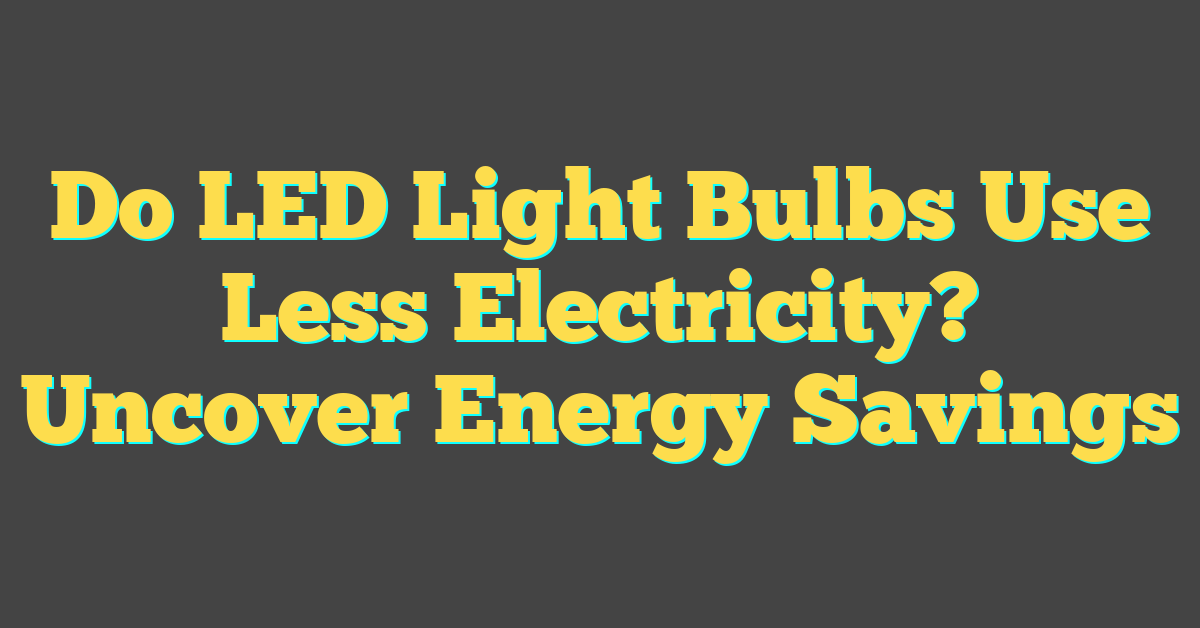Ever wondered what’s behind the warm glow of your favorite reading lamp? It’s not just magic that lights up your room—it’s the fascinating science of light bulbs. You flip a switch and voilà, light! But what makes up these everyday illuminators?
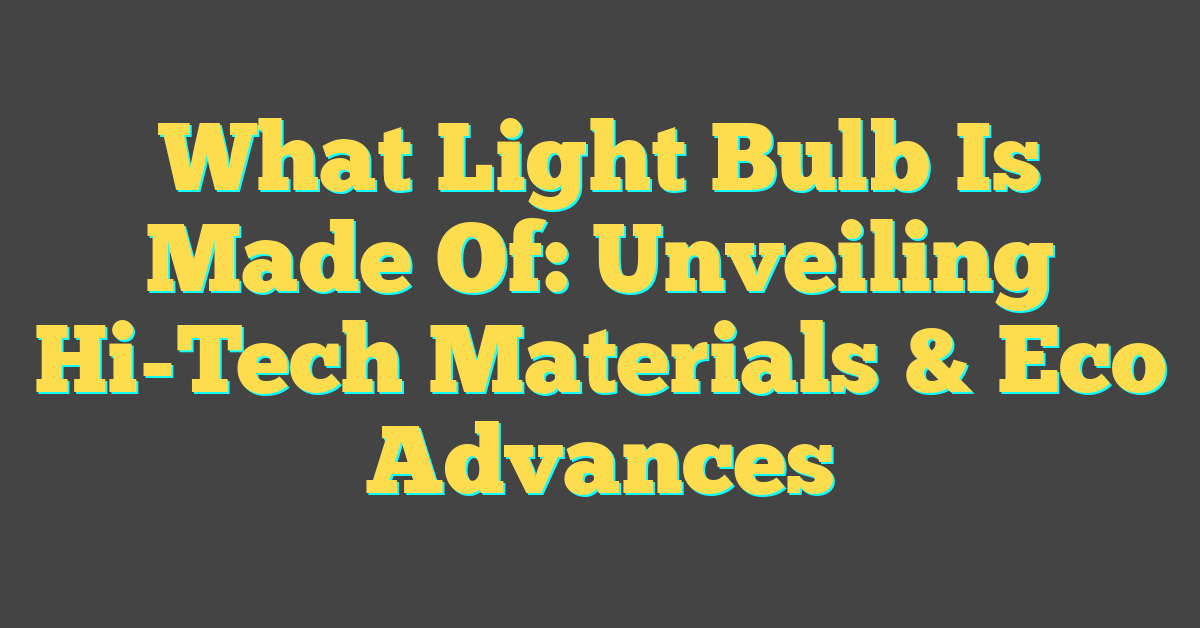
History of Light Bulbs
When you’re admiring the soft luminescence of your favorite reading nook, it’s fascinating to consider the journey of the ordinary light bulb. It’s a tale of innovation and persistence, much like the DIY projects you relish in.
The story of artificial light begins long before the bulb. Early humans had fire; much later, candles and oil lamps came into play. But it wasn’t until the 19th century that the quest for practical electric lighting really took off. You might have guessed that Thomas Edison is a key player, yet there were many bright minds at work. In fact, before Edison’s success, inventors like Humphry Davy and Joseph Swan made significant strides with incandescent light — but these earlier bulbs were too costly or inefficient for widespread use.
In 1879, Thomas Edison developed a bulb with a carbon filament that lasted up to 40 hours. That might not seem long compared to the thousands of hours you expect from bulbs now, but back then, it was a revelation. His success sparked the lighting revolution, turning electric light from a curiosity into a household staple.
Subsequent decades brought advancements in longevity and efficiency. Tungsten filaments replaced carbon in the early 1900s, thanks to their higher melting points and durability. Your cozy reading light today likely comes from an LED (Light Emitting Diode) bulb, which uses a semiconductor to convert electricity into light. It’s miles ahead of Edison’s creation in terms of energy efficiency and lifespan.
LEDs have revolutionized lighting, akin to how you might transform a space with a fresh coat of paint or a well-placed shelf. Today, you can choose bulbs not just based on shape or size, but also color temperature, brightness, and even smart functionality that Edison could hardly have imagined. The evolution of the light bulb is a testament to human ingenuity – it’s about making life at home not just brighter, but better.
The Basics of Light Bulbs
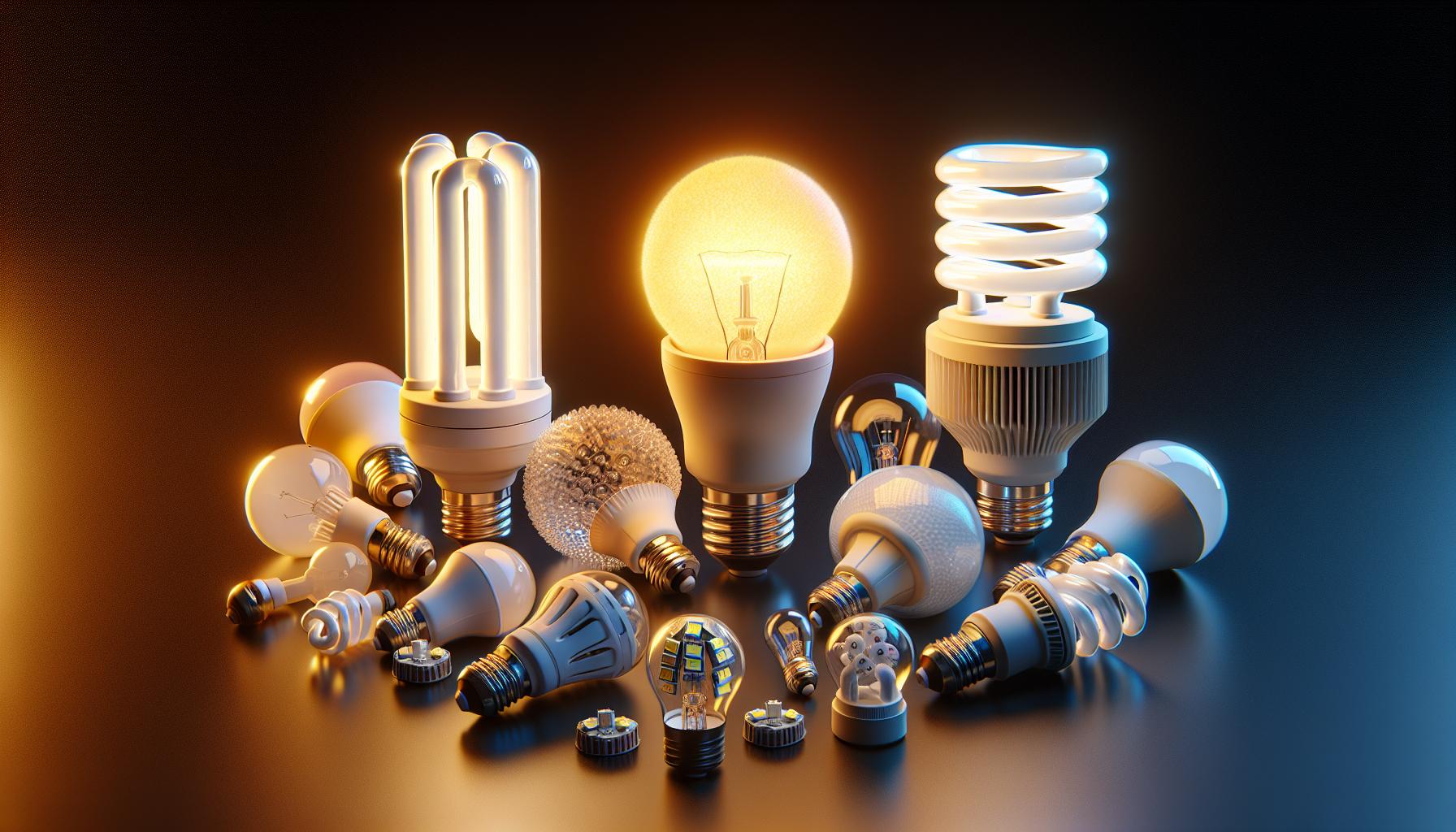
As you delve into the world of lighting, it’s essential to understand what light bulbs are made of. The classic incandescent bulb, a staple in many homes, consists primarily of a glass enclosure called the bulb, which provides a protective environment free from oxygen. Inside this glass bulb is a tungsten filament. When you flick on the switch, electrical current flows through the filament, heating it to a high temperature until it glows, producing visible light.
However, the materials and technology have expanded beyond the simple design of the incandescent. Compact Fluorescent Lamps (CFLs), for example, contain a mix of argon and mercury vapor. The electrical current passes through this gas, generating ultraviolet light that interacts with the fluorescent coating inside the bulb to emit visible light. This process is more energy-efficient, despite the use of mercury which requires careful disposal.
Light Emitting Diodes (LEDs) have taken the stage for their significant energy savings and long-lasting properties. Unlike incandescents and CFLs, LEDs are solid-state devices. They produce light when an electrical current passes through a microchip, illuminating tiny light sources called diodes. LEDs are free from toxic elements and can be made from various materials, including aluminum, gallium arsenide, and synthetic sapphire.
Here are some key materials found in LEDs:
| Material | Purpose |
|---|---|
| Aluminum | Used in the body of the LED for its lightweight and conductive nature |
| Gallium | A component of the semiconductor material |
| Silicon | Often used for LED lenses due to its clear nature |
| Synthetic Sapphire | Basis for LED substrates, providing durability |
Remember, when starting your next home DIY lighting project, the type of bulb you choose can dramatically affect the ambiance and energy consumption of the space. Whether you’re illuminating a cozy reading nook with a warm incandescent glow or outfitting your workshop with efficient LEDs, each bulb type has its unique composition and charm.
Components of a Light Bulb
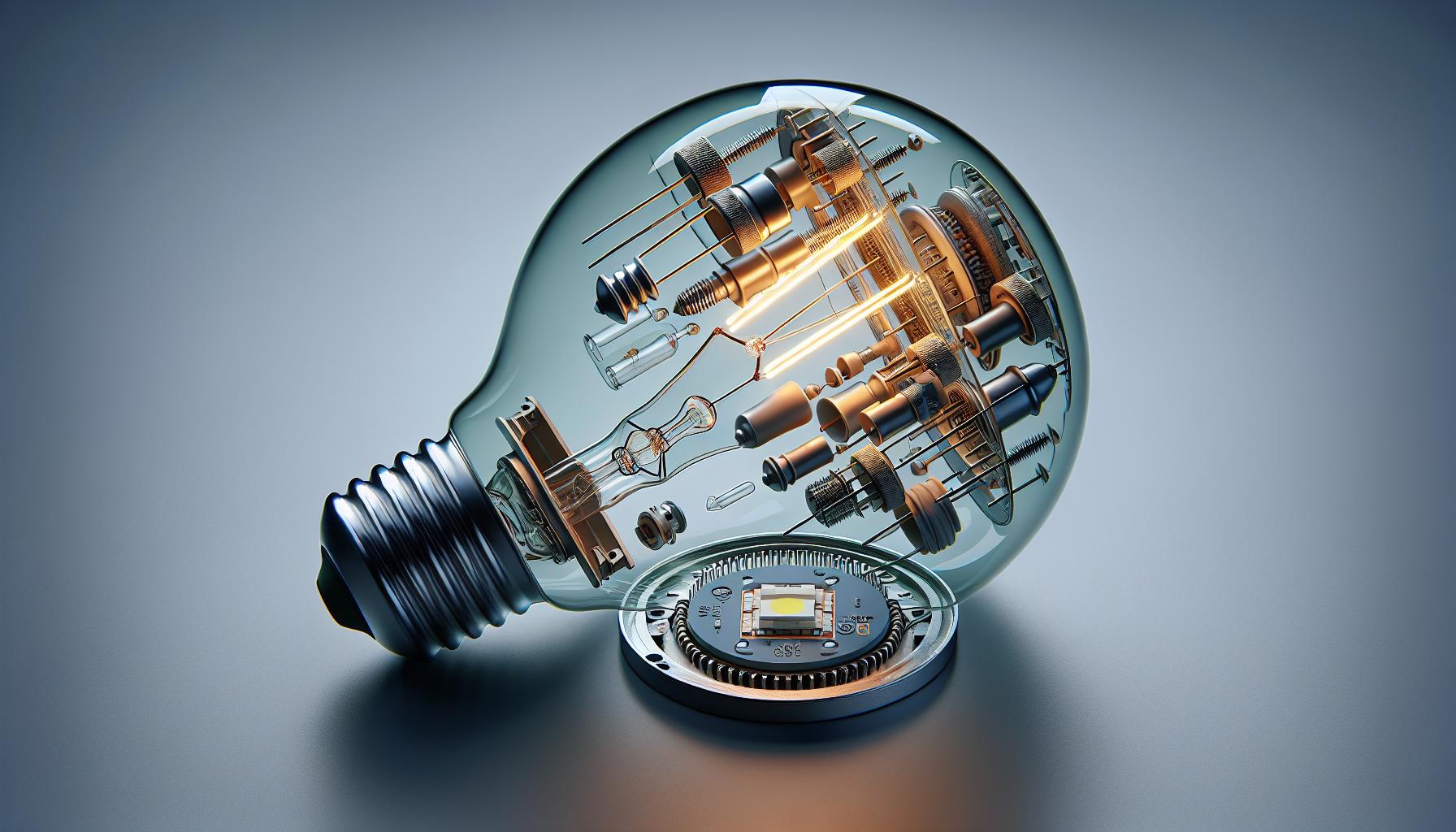
As you dig deeper into the anatomy of a light bulb, you’ll discover there’s more to it than just a glass shape that lights up. Each component plays a critical role in the bulb’s overall function, directly impacting its efficiency and lifespan.
First, there’s the glass enclosure, or bulb, that protects the inner components and helps contain the inert gas that prevents the filament from deteriorating too quickly. The bulb’s shape isn’t just for looks; it contributes to the distribution of light. Whether it’s a traditional pear shape or a more modern spiral, each design serves a purpose in directing light.
« How to Keep Light Bulbs from Burning Out: 5 Pro Tips for Longer Life
Can Light Bulbs Be Used Outside? Outdoor Lighting Tips Revealed »
Inside the glass, the filament is the heart of an incandescent light bulb. Usually made of tungsten, the filament heats up to high temperatures, glowing to produce light. It’s a simple yet elegant process, but one that’s not exactly energy-efficient, as most of the energy is lost as heat rather than light.
For CFLs and LEDs, the internal workings differ significantly. CFLs contain a gas-filled tube coated with phosphor. When electricity stimulates the mercury vapor inside, it emits ultraviolet light, which then causes the phosphor to glow or fluoresce. LEDs, on the other hand, use a semiconductor diode that emits light when current flows through it. This technology doesn’t rely on heat, which is why LEDs are cooler to the touch and much more energy-efficient.
At the base of the bulb, you’ll find the metal contact that connects to the power source, and above that, the insulating material, usually made of ceramic or plastic, ensures that the holder doesn’t get energized. The screw threads, or Edison threads, are the parts that you twist into the light fixture. They’ve been a staple of light bulb design for well over a century, making the task of changing a bulb straightforward for your DIY projects.
Optimizing Your Light Bulb Choice
With all these components in mind, you can start to tailor your lighting selections to the specific requirements of your home projects. Whether you’re illuminating a cozy reading nook or brightening up your workshop, consider the bulb’s components, and how they contribute to the ambiance, longevity, and energy usage of the lighting solution you decide to install.
The Filament: A Key Player
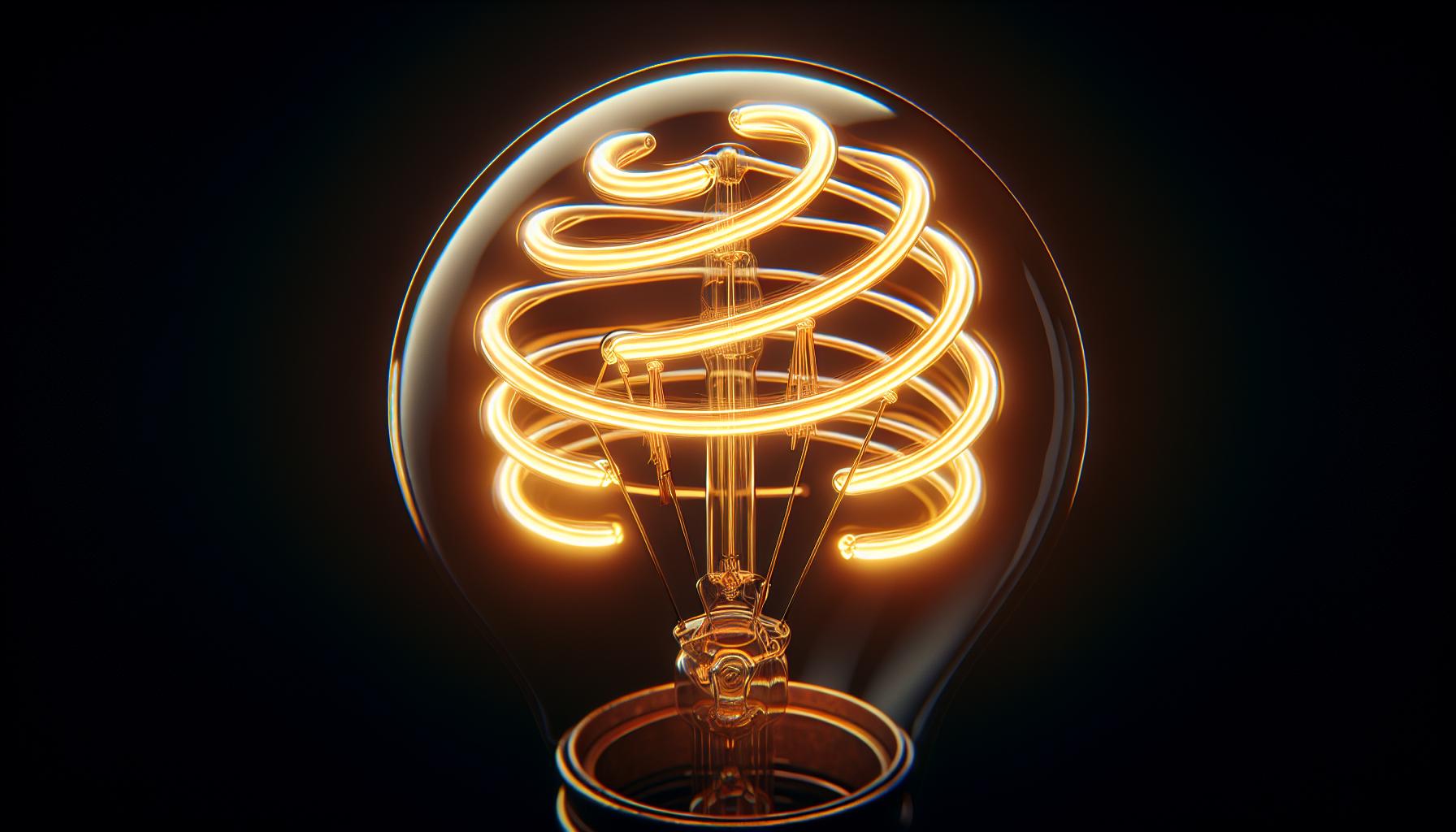
Diving deeper into the heart of traditional incandescent light bulbs, you’ll find the filament, a slender thread of material that’s truly the star of the show. When you flick the switch, electricity heats this filament up until it glows, emitting the warm, inviting light you’re accustomed to. It’s this critical component that ultimately defines the classic bulb.
Made primarily from tungsten due to its high melting point, the filament must withstand intense heat. Over time, the brilliance of its invention hasn’t dimmed; even with more efficient bulbs on the market, there’s a certain charm to the filament’s soft light that modern technology struggles to replicate.
As you embark on your DIY lighting projects, understanding filament intricacies can make a world of difference. It’s not just about the material; it’s also the shape that matters. The coiled design, often a coil of coils, maximizes the amount of light produced while minimizing the physical space it occupies. This coiling helps to prolong the filament’s life by reducing its fragility.
Yet, the filament is also the Achilles heel of the incandescent bulb, especially when it comes to energy efficiency. A vast majority of the energy it consumes is transformed into heat, not light. That’s a real bummer for your energy bills and the environment. Enter the halogen bulb, a type of incandescent that houses the filament in a halogen gas-filled capsule, reusing evaporated tungsten and prolonging bulb life—a clever twist on an old-school classic!
In the landscape of light bulb components, the filament’s role extends beyond illumination. It’s the centrepiece, a link to the past, and a benchmark against which newer technologies are measured. Whether you’re creating a cosy reading nook or designing a vintage-inspired room, the filament remains a key player, full of character and rich history.
Different Types of Light Bulbs
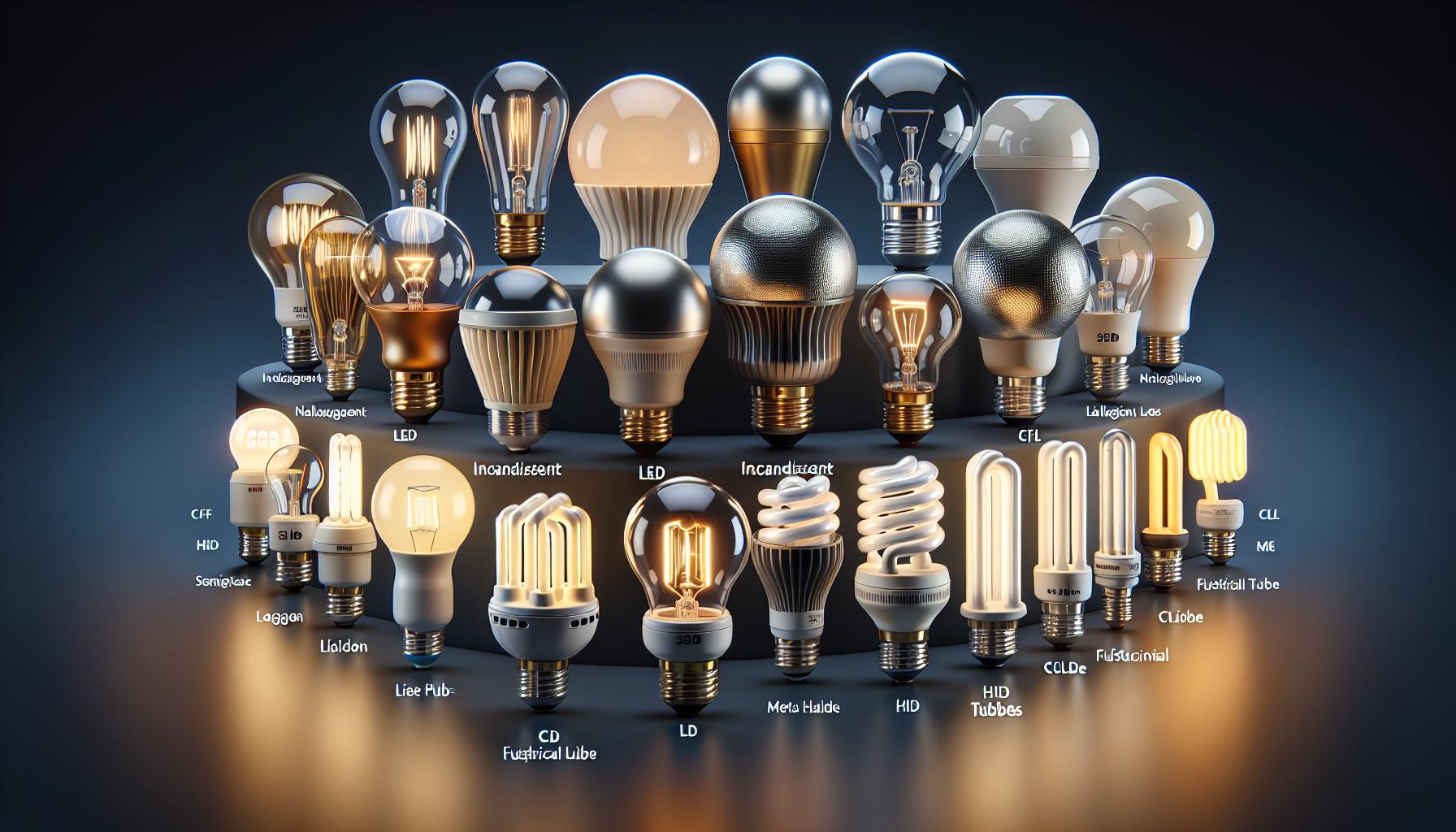
When you delve into the world of lighting, you’ll discover a vast array of light bulb types, each with their unique characteristics. Incandescent bulbs are the classic choice, with their warm glow and simple design. They’ve illuminated homes for over a century, and many DIY enthusiasts still love them for their vintage appeal.
Next, we have halogen bulbs, the more efficient cousins of the traditional incandescent. These bulbs still use a tungsten filament but operate at higher temperatures, resulting in brighter light and improved energy efficiency. Their compact size makes them suitable for a variety of fixtures, fitting snugly into your design scheme.
Stepping into modern innovation, LED (Light Emitting Diode) bulbs take center stage with their exceptional lifespan and energy savings. You’ll be in awe of how these semiconductor devices can convert electricity directly into light, which means less heat and more light for your buck. And the best part? You can find LEDs in a spectrum of colors ideal for setting the mood in any room.
CFLs (Compact Fluorescent Lamps) are yet another choice for the energy-conscious. These use a fraction of the energy of traditional incandescent bulbs and can come in various shapes and sizes. They’ve had a reputation for their slower start-up time, but recent advancements have made them quick to light up.
For a more industrial or retro look, you might lean towards Metal Halide and High-Intensity Discharge (HID) lamps. Commonly found in larger spaces like warehouses or stadiums, they have a commanding presence and can cast powerful light across vast areas. But they aren’t just for commercial use; some daring DIYers incorporate them into loft spaces for a bold statement.
Then there are fluorescent tubes, known for their long, lean shape and prevalence in offices and garages. These bulbs have come a long way from the harsh lighting of years past, with newer models producing a softer and more pleasant light.
And if it’s control you’re after, smart bulbs have entered the scene, allowing you to adjust brightness and color with the tap of a smartphone. They mesh seamlessly with your smart home systems, giving you command over ambiance like never before.
Research and Innovation in Light Bulbs
As you dive deeper into the world of light bulbs, it’s impossible not to marvel at the leaps and bounds made in research and innovation. Smart technology has been a game-changer, allowing you to adjust your lighting from the comfort of your smartphone. From tuning the color temperature to scheduling when your lights turn on or off, smart bulbs are shaping the future of home lighting.
The material makeup of bulbs is also changing. Scientists have been busy developing silicon carbide substrates for LEDs, making them more robust and efficient. This allows bulbs to operate at lower temperatures, extending their lifespan and conserving energy.
On the DIY front, you’ll be thrilled to know that breakthroughs in lighting technology are empowering homeowners to undertake innovative projects. Imagine installing light fixtures that sync with your home’s decor or even your mood, thanks to color-changing and dimmable LEDs. With advancements in OLED (Organic Light Emitting Diodes), which boast incredibly thin panels, the possibility for integrating lighting into your DIY projects is expanding rapidly.
For the eco-conscious, recent developments have led to a surge in bulbs that require less energy to produce the same amount of brightness. Here’s a quick look at the progress in lumens per watt (lm/W) over recent years:
| Type of Bulb | Efficiency (lm/W) |
|---|---|
| Incandescent Bulbs | 10-17 |
| Halogen Bulbs | 16-24 |
| CFL | 35-55 |
| LED | 80-100 |
Finally, don’t overlook the human-centric lighting wave. This approach tailors lighting systems to support human circadian rhythms, potentially improving health and well-being. So, the next time you’re picking out a bulb, think about how its spectral output might affect your sleep or concentration. It’s just one more way lighting can enhance your day-to-day life without you even noticing.
Conclusion
You’ve journeyed through the evolution of light bulbs, from their traditional forms to the cutting-edge advancements of today. It’s fascinating to see how these everyday items are transforming, becoming not only smarter but also more considerate of our planet and our health. As you switch off your screen and perhaps flick on a light, you’ll now see that simple bulb in a whole new light—no pun intended! Remember, every time you choose a bulb, you’re not just illuminating your space; you’re making a choice that echoes through your well-being and the environment. Keep shining bright!
Frequently Asked Questions
What are the latest advancements in light bulb technology?
The latest advancements include smart bulbs that can be controlled via smartphones and the development of silicon carbide substrates for LEDs, enhancing their efficiency and durability.
How are smart bulbs controlled?
Smart bulbs are typically controlled through smartphone apps or voice-controlled home assistants, allowing users to adjust brightness, color, and turn them on or off remotely.
What is meant by ‘human-centric lighting’?
Human-centric lighting refers to lighting systems designed to support human circadian rhythms, potentially improving health and well-being by mimicking natural light patterns.
Why is eco-consciousness important in light bulb production?
Eco-consciousness in light bulb production is vital as it leads to the creation of bulbs that require less energy for the same brightness, thus reducing environmental impact and conserving resources.
Are today’s light bulbs more energy-efficient?
Yes, modern light bulbs, including LEDs and smart bulbs, are significantly more energy-efficient, providing the same level of brightness with less energy consumption compared to older technologies.


